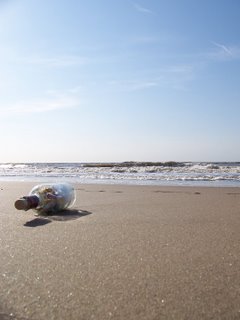 We arrived in Garmisch-Partenkirchen (referred to as GAP from this point on) knowing two things about it.
We arrived in Garmisch-Partenkirchen (referred to as GAP from this point on) knowing two things about it.(1) that we were 1.5 hours from Munich, and
(2) that we were at the foot of Germany's highest mountain, Zugspitz (2,962m)
We thought GAP would be a good place to stay to see Munich, and a little nature. We soon learned, however, that GAP had so much more to offer than just a bed with a view. We postponed Munich a day and explored the region. Because we were overnight guests we got a visitor card and therefore had access to a slew of free things (we like free things). They include: municipal transportation, the local wave pool, walking tours and musical performances. Since the walking tours were in German and the music season was over, we decided to go swimming!
 The pool was neat. It was full all the way to the top, to the point it looked to be overflowing, and the only lights were blue atmospheric lights at the bottom of the pool. Let me tell you, Jess, there would be NOTHING to blow your whistle at in this pool, as there appeared to be NO pool rules! Running on the deck: fine. Drowning your friends: A-OK!
The pool was neat. It was full all the way to the top, to the point it looked to be overflowing, and the only lights were blue atmospheric lights at the bottom of the pool. Let me tell you, Jess, there would be NOTHING to blow your whistle at in this pool, as there appeared to be NO pool rules! Running on the deck: fine. Drowning your friends: A-OK!  Riding on shoulders: also acceptable! Kids in the hottub: Whats the problem with that?! You would have had a coronary! When the waves came on, the very reluctant lifeguards dragged themselves from smoking in the office to watch us. In another pool, a diving pool, there were 6 diving boards and platforms, just like at Brock. Jonathan Braveheart went off the highest platform! He's my hero. (Jonathan: It was practically as high as Zugspitz itself!) The hottub was a separate big pool all on its own with a fountain in the middle. It was a lot of fun, but I could have done without all the speedos!
Riding on shoulders: also acceptable! Kids in the hottub: Whats the problem with that?! You would have had a coronary! When the waves came on, the very reluctant lifeguards dragged themselves from smoking in the office to watch us. In another pool, a diving pool, there were 6 diving boards and platforms, just like at Brock. Jonathan Braveheart went off the highest platform! He's my hero. (Jonathan: It was practically as high as Zugspitz itself!) The hottub was a separate big pool all on its own with a fountain in the middle. It was a lot of fun, but I could have done without all the speedos! Our full day in GAP was one of the most incredible scenic-wise, thus far. We hiked out to the Partnach Gorge, which is a steep cut through the mountains over 2,000m long with walls taller than 250m! We walked along close to the bottom of the gorge in galleries cut out of the rock! The water rushed over rocks and around sharp corners below us, and sun filtered down through the trees high above, barely lighting the path. It was one of the most breathtaking things that I have ever seen. (And keep in mind, I have been to Dingle! lol)
Our full day in GAP was one of the most incredible scenic-wise, thus far. We hiked out to the Partnach Gorge, which is a steep cut through the mountains over 2,000m long with walls taller than 250m! We walked along close to the bottom of the gorge in galleries cut out of the rock! The water rushed over rocks and around sharp corners below us, and sun filtered down through the trees high above, barely lighting the path. It was one of the most breathtaking things that I have ever seen. (And keep in mind, I have been to Dingle! lol) For the afternoon we hopped on a bus to Eibsee (German pronounciation: still unknown), a wee town further up the mountain. From there, we hiked all the way around the lake with Zugspitz towering of us and his other mountainous friends. It was so amazing that I almost didn't believe that it was real. Don't worry, I pinched myself: it turned out I wasn't dreaming after all.
For the afternoon we hopped on a bus to Eibsee (German pronounciation: still unknown), a wee town further up the mountain. From there, we hiked all the way around the lake with Zugspitz towering of us and his other mountainous friends. It was so amazing that I almost didn't believe that it was real. Don't worry, I pinched myself: it turned out I wasn't dreaming after all.

































